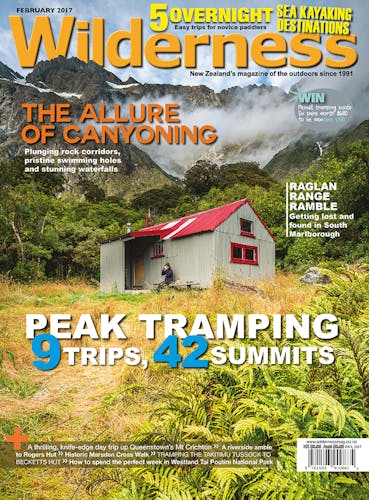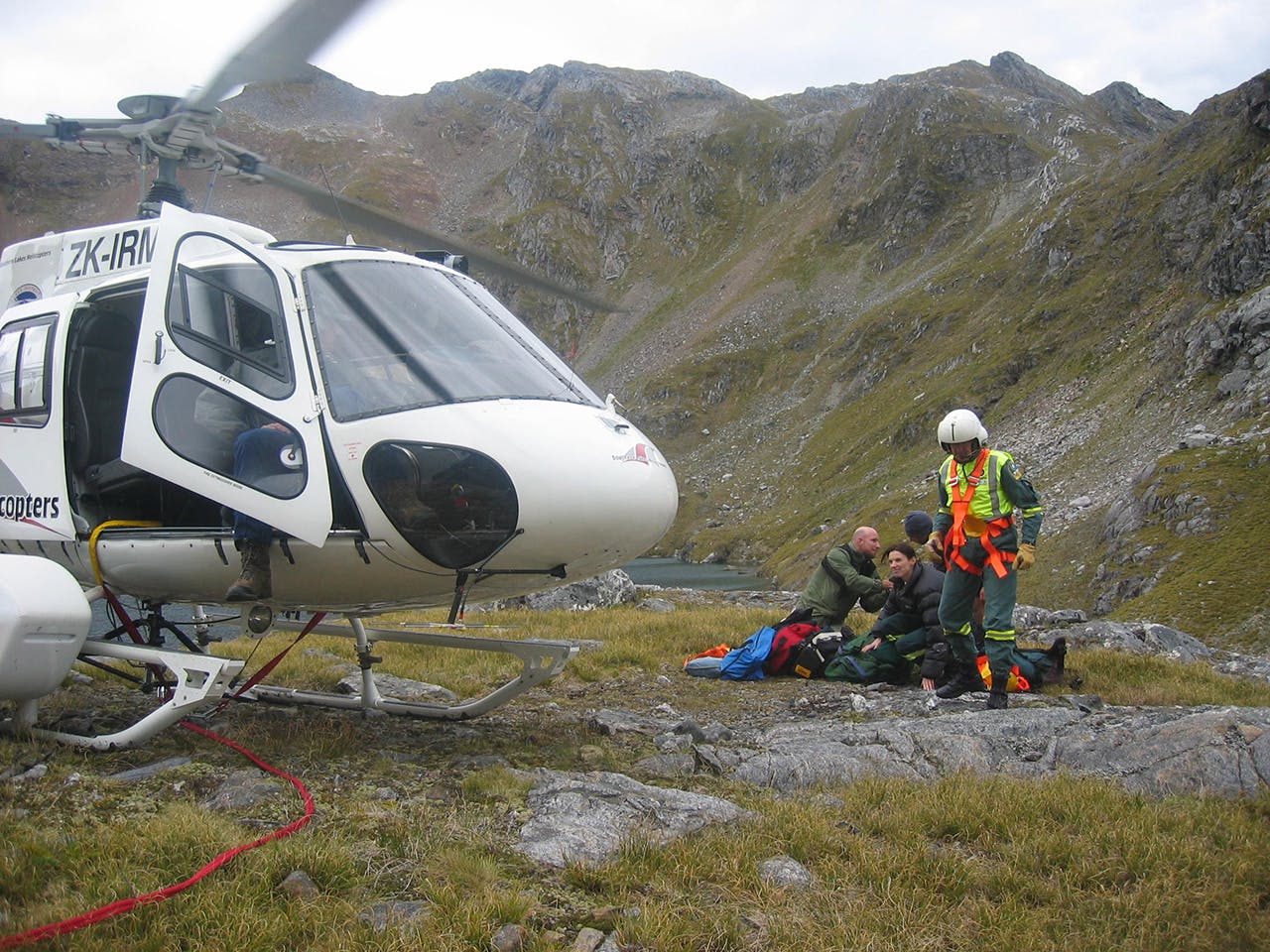Beacon usage rose in 2016
The number of people who are carrying and activating rescue beacons is on the rise.
There were 230 land-based beacon activations in 2016, 152 of which necessitated rescues. Nationwide, the total number of beacons registered in the Rescue Coordination Centre of New Zealand (RCCNZ) database increased by more than 11,000 to 62,241. According to RCCNZ manager Mike Hill, the increased use of beacons is taking the “search” out of search and rescue.
“In the not-too-distant past, a person might go into the wilderness and if they hadn’t come back a few days later, authorities were alerted and we would go into a large area and start searching. Beacons changed that – now someone has the connection to say ‘I’m in distress, this is where I am,’” Hill said. “We’re being more efficient and more effective.”
The rescue centre has seen a range of different incidents over the past year, from tramping accidents to sudden illnesses in the bush. And, it’s a mixed bag of activities that have required rescues, from horse riding to mountain biking and rafting.
Hill said it’s been encouraging to see people choosing to activate the beacons at the right times, and that it’s always better to signal for help while there is still enough daylight to perform the rescue.
“It’s not for us to judge from the safety of our office,” Hill said. “When you are in the bush, when you’ve been out for hours or days, it’s how you feel at the time. We’d rather have a beacon activation at 3pm to rescue before nightfall than have an activation at 9pm where it can be a more challenging rescue.
“There’s a whole range of factors that most sensible people are considering before they push the button.”
Norovirus outbreak on Travers-Sabine
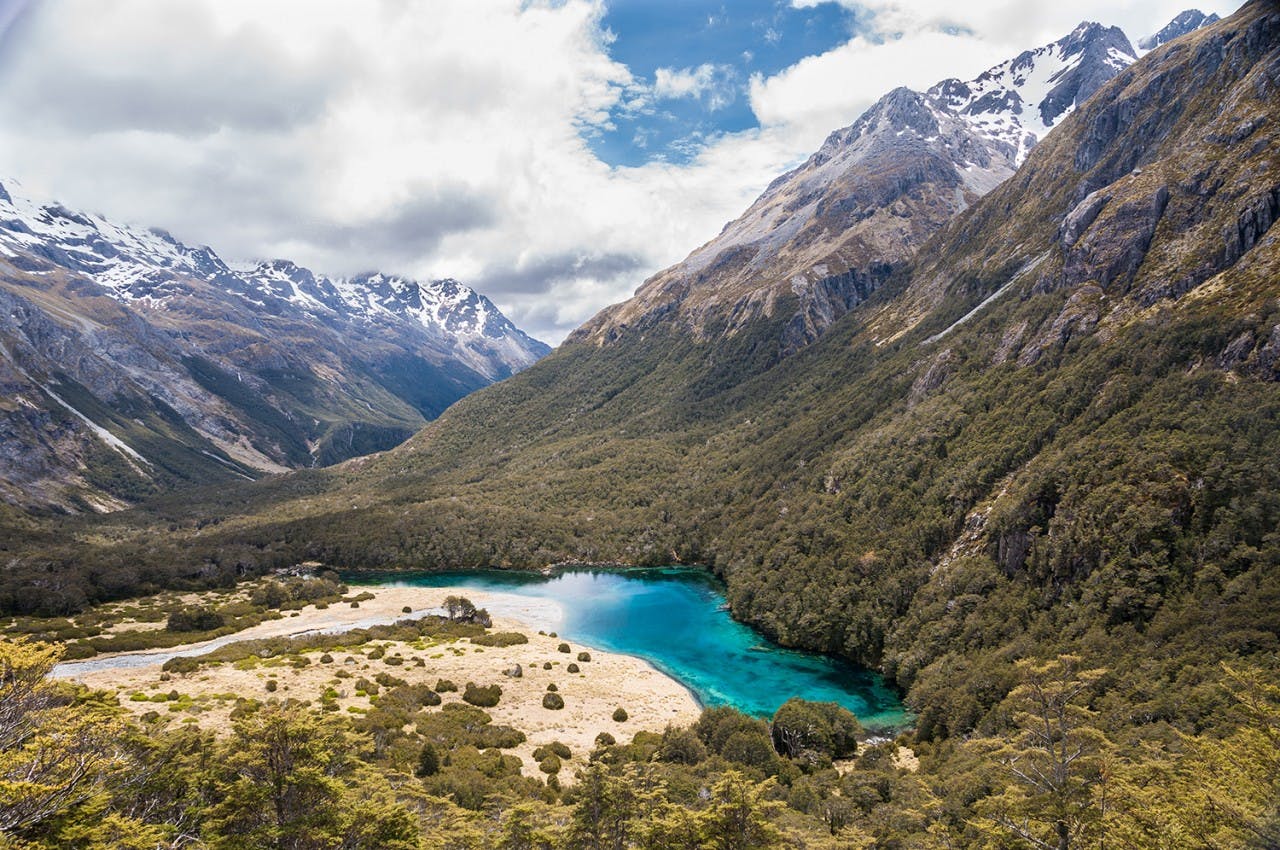
Pristine Blue Lake is one of the drawcords of the Travers-Sabine Circuit. Photo: David Hollis
It was a nasty welcome to the New Year for 40 trampers who contracted norovirus on the Travers-Sabine circuit in Nelson Lakes National Park.
No one knows how the outbreak occurred, but DOC was made aware of people being sick at West Sabine Hut on December 30 and walkers departing the trail also said they were sick or had encountered sick people.
DOC has not confirmed the outbreak is norovirus, but the symptoms, vomiting and diarrhea, are consistent with the illness, which can spread easily in confined spaces.
“As soon as you have vomiting in a closed space like a hut, even if vomiting into a bag, you have airborne contaminants,” said Nelson Lakes operations manager John Wotherspoon. “It’s real easy for that stuff to go around.”
Wotherspoon took immediate action to prevent the further spread of the illness. He organised a helicopter to drop off bleach and cleaning products to the huts on the circuit, and on January 5 arranged for the huts to be sterilised with bleach. “We nuked every hut essentially,” Wotherspoon said. “We cleaned all the rubbish out, sprayed the front and back of the mattresses, all around the doors, windows, benches, places where people put their food – any surface people could have conceivably touched.
“Hopefully that will do it for us.”
Huts on the circuit that were sterilised were: Lakehead, Coldwater, Sabine, D’Urville, Hopeless, John Tait, Cupola, Upper Travers, Blue Lake and, West Sabine. As a precaution, Angelus Hut, Speargrass Hut and Bushline Hut were also treated.
There have been no further reports of people becoming ill, but the Nelson Marlborough District Health Board has advised trampers to follow preventative measures such as washing and drying hands using soap and water and to pack hand sanitiser and a small bottle of bleach.
If you become sick, isolate yourself as much as possible, avoid vomiting into sinks or shared spaces and benches, and do not prepare food for others.
Te Araroa Trail magic saves the day
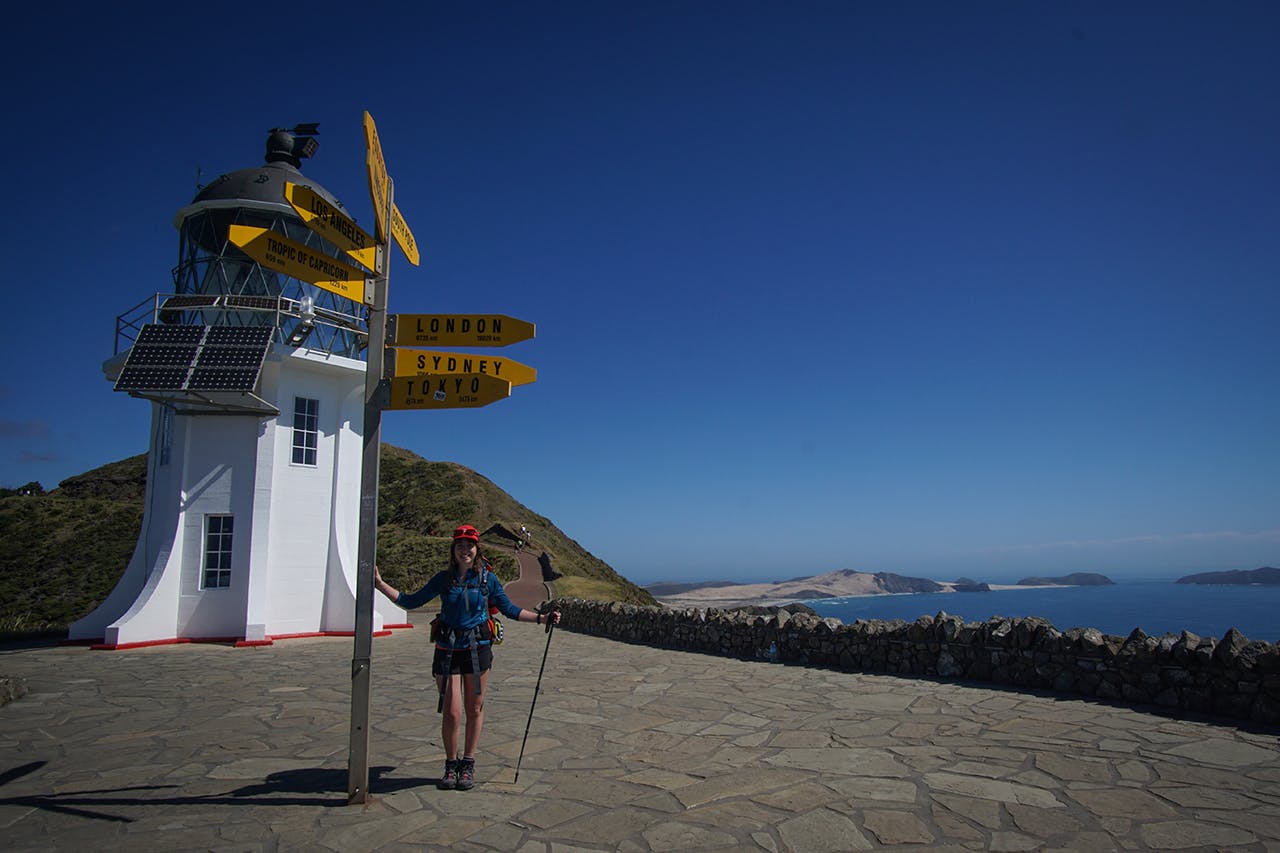
Jen Hanlon at the start of her Te Araora Trail adventure – using borrowed kit
When Te Araroa Trail walker Jen Hanlon’s backpack was lost in transit, she thought her thru-hiking goals were kaput.
“I was just lost. I was in Auckland, and I didn’t know what to do – I had nothing. I didn’t know who to talk to,” Hanlon said.
Someone recommended she post about her situation on the Te Araroa Facebook page, so Hanlon put up a message asking for advice on how to get discounted or second-hand gear to replace what she’d lost.
The responses came rolling in. TA veteran Rob McKay was one of the many who offered advice; he told her the Auckland Tramping Club would be a great place to source borrowed gear, in the hopes that her bag would eventually resurface.
McKay took matters into his own hands, and emailed about 50 of his tramping friends in Auckland, explaining Hanlon’s situation and asking if anyone would be willing to help out.
And, thanks to a few generous individuals, she was able to borrow a pack, sleeping bag, tent, stove, eating utensils and a knife.
Hopeful that her bag would turn up while she was walking from Cape Reinga to Auckland, she planned to return the gear on her way through Auckland. However, her pack still hadn’t turned up when she made it back to the city, but the people who lent her the gear have allowed her to continue to use it throughout her hike. One woman even gifted her the tent she’d been borrowing. Hanlon only had to buy a few things to carry on; she chose to purchase a new pack – one that fit her better – a new knife, and a sleeping pad.
She said she’s choosing not to focus on the disappointment of losing her gear, and instead is floored by the warmth and generosity of the people she’s met.
“In the end it’s just stuff,” she said. “The experience is what’s going to last.”
Canterbury Hut gets a spruce up
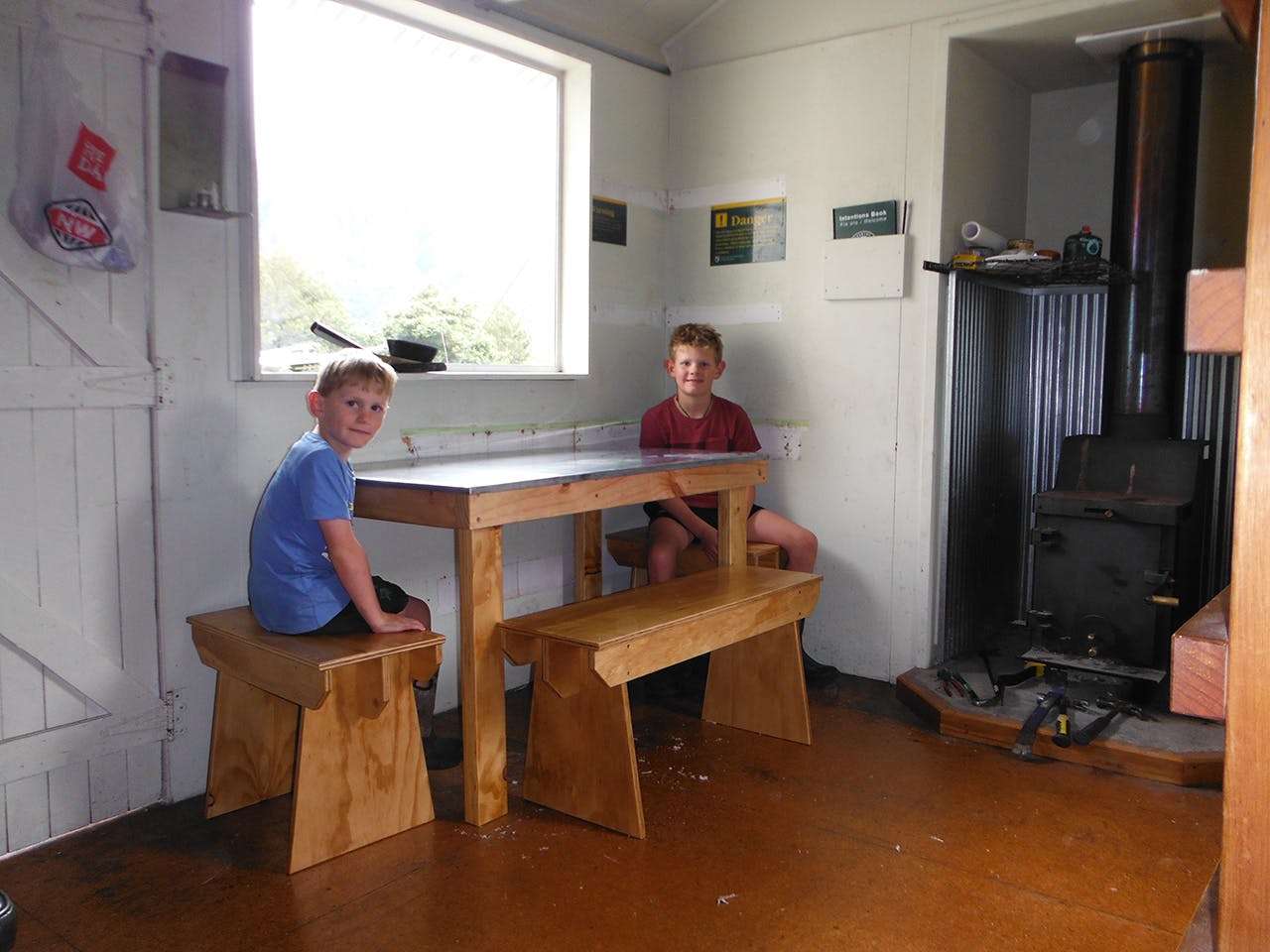
Enjoying the fruits of their labour – a seat at the hut’s new bench. Photo: Supplied
A group of Canterbury volunteers have given the Curtis Memorial Hut a makeover.
Mike Lagan of Geraldine received funding from the Outdoor Recreation Consortium to make some improvements to the four-bunker, which is nestled in the Havelock Valley, next to the Rakaia River and about 20km from the Rangitata Gorge Road end.
“It’s a neat little hut. It’s slightly elevated above the river and has a great view with a nice big window that had just a dirty, grubby little bench underneath it. I thought, ‘What a waste of a window. Why don’t we put a table and chairs underneath the window and put a new bench on the other side of the hut, so when you’re having a meal you can sit at the table, look down the valley, and have a great view’,” Lagan said.
Lagan, together with cabinet maker Zack Bennett and Bennett’s two sons Jack and Oscar (ages 9 and 5), spent a few days installing the new table and bench, and also constructed a woodshed just outside the hut. The work cost $800, which Lagan said was a bargain compared to some hut projects that require helicopter assistance to transport gear, supplies and volunteers.
There’s 4WD access to the hut, so Lagan and Bennett were able to drive a truck in to do the work. Lagan also received $700 in funding to spruce up the nearby Mistake Flats Hut; he plans to paint it inside and out.
“As the years are going by, a lot of these huts are not getting maintained to what they once were. DOC just simply doesn’t have the means,” Lagan said.
He’s also a member of the South Canterbury Recreational Sportsman Club, which will co-manage Curtis Memorial Hut with DOC.
Wildboy humbled by wildest island
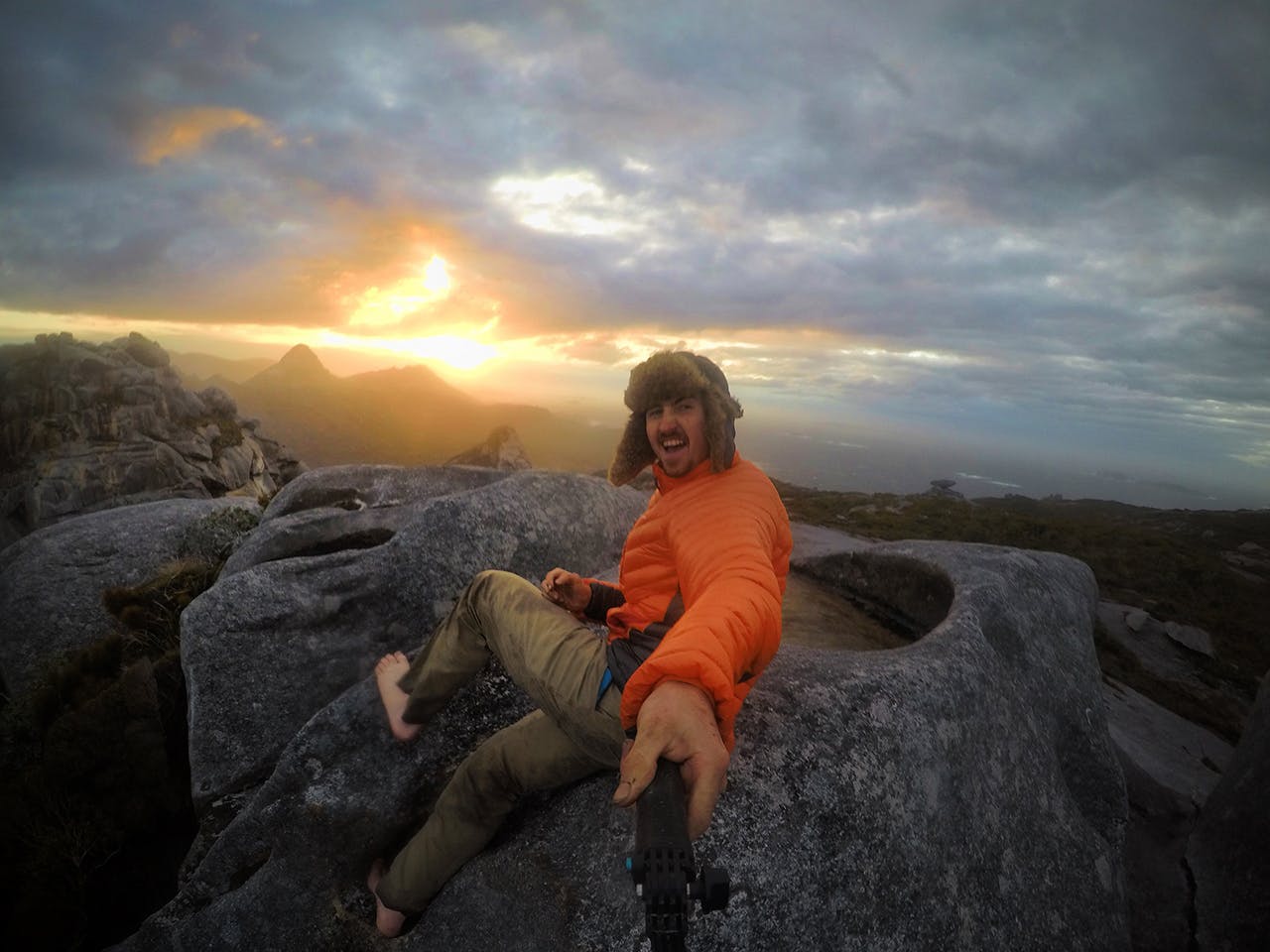
Brando atop Magog during his 30-day tramp around Stewart Island. Photo: Brando Yelavich
Brando ‘Wildboy’ Yelavich has returned from a 30-day solo tramp around Stewart Island.
Yelavich, who is known for his walk around the coastlines of both the North and South islands, had planned to circumnavigate Stewart Island, a journey he expected would take him up to three months. However, the extreme terrain and total isolation forced him back.
“It was type-2 fun,” Yelavich said. “Looking back on it, it was awesome. But during the adventure itself, there were a lot of times where it was pretty miserable.”
While his original plan had him tracing the coastline, he quickly found it was slow going. Dense scrub, heavy rain, and rough terrain slowed him down considerably, some days only making it half a kilometre.
“It was different to what I expected,” he said. “I expected it to be a lot less wild than it was, but it’s one of the most wild places you can visit in New Zealand.”
In addition to the challenges of bush-bashing, he was surprised at how lonely he felt. In the 30 days he was out there, he said he only saw three people.
“That got pretty intense at times, and that was really different from my New Zealand adventure, where I met people every couple days, if not every day. This one was like, boom, nothing. No people, no phone communication – just me in my own head,” Yelavich said.
Once he changed his mind and decided to cut the journey short, he moved away from the coast and climbed some of the ranges on the island, such as Mt Allen and the Ruggedy Range.
“It was the best decision I ever made,” he said.
Standing atop Magog, the 202m sister summit of Gog in the south of the island, was a particularly special moment for Yelavich.
“It was the turning point in my mental head space,” he said. “To that point, I wasn’t really having fun. I was pushing myself through all of these hard challenges, reaching my breaking point almost every day.
“And when I got to the Gogs I made the decision there that, ‘right, from now on, I’m only going to do things that make me happy’. And the scrub wasn’t making me happy.”
Mountain book competition open for entries
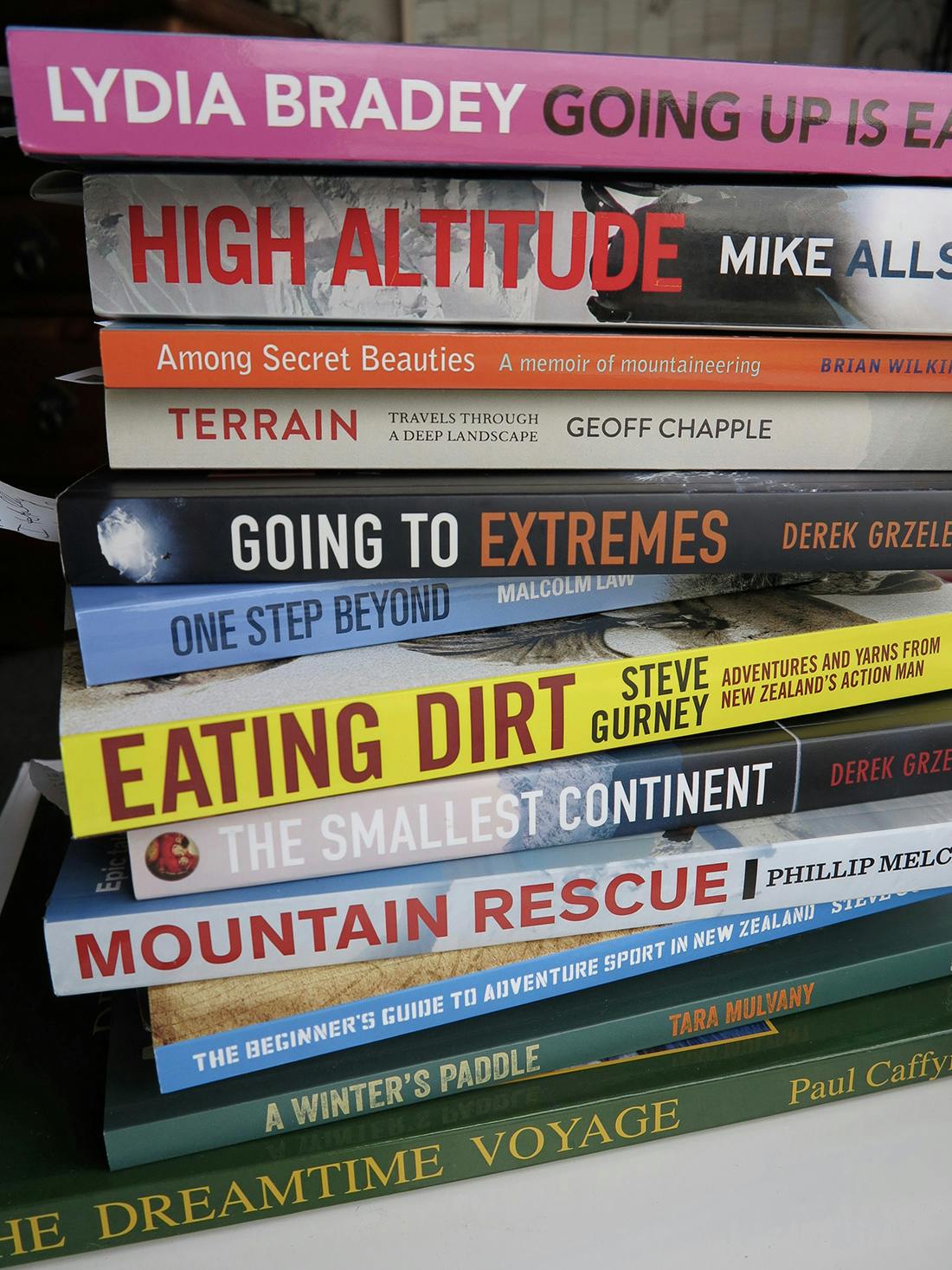
Entires have opened for the 2017 Mountain Book Festival
Books and unpublished essays can now be submitted for the NZ Mountain Film and Book Festival’s 2017 competition with $1750 in prize money up for grabs.
The Book Festival was added to the lineup in 2015 and there are now five competition categories including the Wilderness-sponsored Magazine Article Award. There’s also awards for books published since 2007 on adventure travel, mountain or adventure fiction and poetry, guidebooks and non-fiction mountain and adventure literature. Entries close on March 30 and awards will be given during the Festival in Wanaka and Queenstown which runs from June 30 to July 9.
The three-person judging panel is made up of senior lecturer at University of Otago, Dr Simone Celine Marshall, Wanaka adventurer and writer Dave Vass, and Mt Aspiring College English teacher, Joanne Weggery.
Vass said: “Having recently moved from actually doing stuff in the mountains to reading and writing about doing stuff in the mountains, I have become particularly interested in the way we express our interactions with the natural world, be it through words or actions. I’ve always been impressed with the variety of these expressions and I’m looking forward to seeing this year’s efforts.”
The Book Festival is a stand alone event and aims to celebrate mountain literature by bringing together writers, publishers, editors, adventurers, and of course, readers. The festival will feature readings, book signings, guest speakers, workshops, an adventure writing school and book launches.
The 2016 Book Festival competition had 20 entrants with the Grand Prize awarded to adventure racer Nathan Fa’avae for his book Adventurer at Heart.
Find out more about the festival and how to submit story or book entries at mountainfilm.net.nz.





